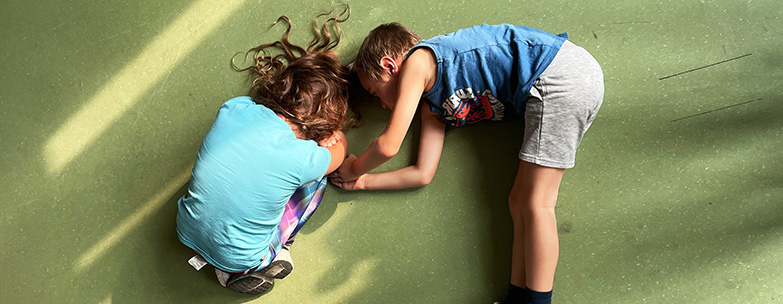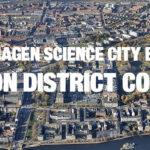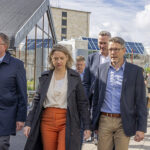Bridge between academic silos let researchers co-develop new key to reading
INNOVATION DISTRICT COLLABORATION: Learning to read is hard, but it opens the door to lifelong education and understanding. Now, new research shows that reading skills could become a lot easier for children to pick up. A team of researchers bridging the two Copenhagen Science City partners, University of Copenhagen and University College Copenhagen recently proved that a method called Embodied Learning holds great promise. By Jes Andersen.
Miming sounds to crack reading code
The key to book-learning is to understand the connection between a letters’ shape and the sound it represents. Jacob Wienecke is an expert on the neuroscientific basis of motor skills and cognitive learning. He was convinced, that kids could crack the reading code sooner, if they were taught their letters while using their entire body to mime the sounds, or phonemes, that a letter represents. He just needed help to prove it.
My understanding of children is very fundamental. I needed to team up with someone with a practical, pedagogic, and didactic understanding. As it happens, I found these skills just across the street, at a neighbouring research institution in Copenhagen Science City”: Jacob Wienecke, Associate Professor, University of Copenhagen, Department of Nutrition, Exercise and Sports NEXS.
Collaboration brought scientifically convincing results
Wienecke turned to University College Copenhagen. Here, they train the teachers who will teach reading skills to coming generations of children. The institution also houses a research centre, where Anne-Mette Veber Nielsen investigates strategies for literacy education. She has enjoyed the collaboration so much that she would recommend it to colleagues.
I feel that we were able to unite the best from two different academic traditions. This led us to a better and more scientifically convincing result”: Anne-Mette Veber Nielsen, Ph.D. Danish National Centre for Reading
A message to reading teachers
Veber Nielsen is thrilled by the results of the research project, but cautions, that they need to be validated in practice. None the less, she has a message to teachers everywhere.
To any teacher who is already using movement when they teach letters, I would say: Keep doing what you are doing! Our results are absolutely promising. We do need to replicate our results with real teachers who have little time for supplementary training and who manage big noisy classrooms, but I am hopeful”: Anne-Mette Veber Nielsen, Ph.D. Danish National Centre for Reading
Better learning with movement
Wienecke and Nielsen tested three strategies for learning letters. One where the kids sat down with pen and paper. One where they shaped the letters with hands and arms and a third where they got to use their entire bodies to mimic letter shapes. Both non-traditional methods helped the children understand how shapes and sounds connect, but the full body group was much better at remembering what they learnt, says Wienecke.
For more than 200 years, a central task for schools has been to teach kids to sit still. Now we show that children become much better learners if we encourage them to move. That is a paradox”: Jacob Wienecke, Associate Professor, University of Copenhagen Department of Nutrition, Exercise and Sports.
Location improves research
Copenhagen Science City is an innovation district anchored by the three research organisations University Hospital Rigshospitalet, University College Copenhagen and University of Copenhagen. At UCPH, Nikolai Baastrup Nordsborg is Head of Department at NEXS. He feels that the closeness of the three institutions ought to lead to much more collaboration.
Our location gives us access to 30,000 other researchers and students within a five-minute walk. Combining our academic and theoretical insights with clinical and practical expertise from neighbouring institutions is extremely valuable. Because we could inspire each other and because new ideas and methods get adopted much quicker, if we co-create them with practitioners”: Nikolai Baastrup Nordsborg, Head of Department, University of Copenhagen Department of Nutrition, Exercise and Sports.




